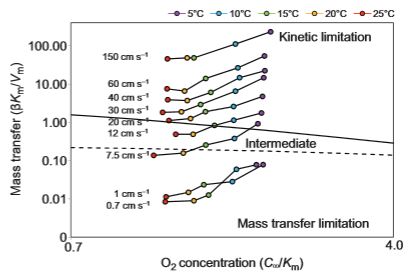Multiple Stressors & Climate Change
Given the fluctuating nature of intertidal zones, marine biologists have had long-standing interests in the degree to which environmental
variation influences the distribution and abundance of species. In a fluid environment, temperature, flow, light, pH, and salinity are among the important factors that drive biological response. Many of these effects are sublethal, and thus quantifying the shape of reponse curves is of greater interest than documenting simple "high vs. low" relationships. Although much interest exists in the effect of multiple factors on physiology and behavior, few studies have sufficient resolution to produce appropriate performance curves in a fully crossed design.
My results, drawn from work on sea urchin and barnacles, demonstrate the limitation of inferences drawn from single-factor designs, strongly advocating for approaches that consider interactions among multiple factors.

Fig. 1. Effects of water flow and temperature on oxygen uptake in barnacles . |

Fig. 2. Energy available for production at different temperatures and flows as predicted from barnacle energy budget.
|


